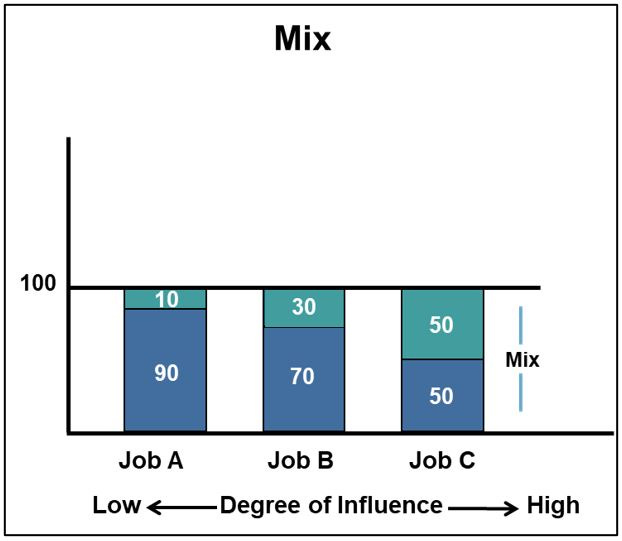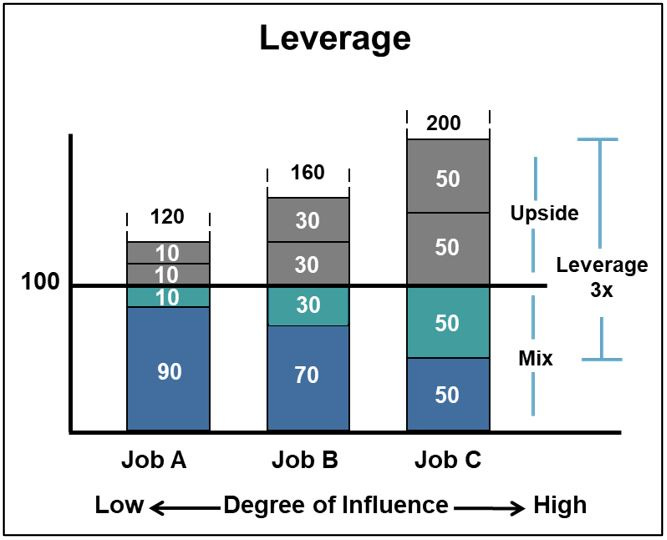Designing a CS Comp Plan
Read Time: 6 minutes
A HUGE thank you to our newsletter sponsors for moving this newsletter to free for our readers. PAID subscribers will continue to receive access to the templates and special content from this newsletter. If you're reading this but haven't subscribed, join our community of over 1,384 crazy smart Revenue leaders. If you’d like to sponsor the newsletter reply to this email to learn more.
This weeks Newsletter is brought to you by Growblocks where you can manage your full revenue engine from traffic to churn. We allow you to apply data-driven and scientific methods to grow revenue predictably and efficiently. Watch a 5 min demo of how it works here or listen in to our podcast here.
Creating equitable territories is hard. Use BoogieBoard’s AI design copilot to generate them in seconds. Build trust with sales and customer success teams. Reclaim your time. Champion equity. Schedule your free AI-driven equity analysis with BoogieBoard today.
Recently, I developed leveraged compensation plans for the Customer Success organization. Before then, the CSMs were compensated with a fixed salary and a percentage bonus tied to MBOs (Management By Objectives). I won’t be going into MBOs but here’s the Wikipedia page if you want to read all about it. I argue this is a perfectly acceptable compensation plan. However, I’d argue there’s an even better plan out there for those who operate SaaS businesses.
Place the CSM on a leveraged compensation plan.
“Show me the incentive and I will show you the outcome.” — Charlie Munger
But first let's dive into some compensation terminology. There’s the concept of Mix and the concept of Leverage.
Paid subscribers will gain access to a Google Sheet sales compensation calculator template
Mix
The pay mix is the ratio between fixed salary and variable. Many an account executive have a 50/50 plan. A sales rep with a $100,000 fixed salary has the ability to achieve $100,000 in commission if they reach their target. Mix is generally a pricing of risk. The higher the risk, the higher the mix. Sales reps have less certainty in their roles and hence why the 50/50. CSMs will be working with existing customers so the risk is lower. This can be directly seen with win rates. Renewal win rates are on average much higher than new business win rates.
Leverage
When I first started designing compensation plans I would always get this confused. Leverage is the ratio of the maximum payout rewarded for outstanding performance. Not every performer is going to reach the same attainment. Some will reach 50%, some will reach 70%, some will reach 100% and some will hit home runs with 120% or greater. That performance range drives hiring practices, enablement, and compensation design.
Let’s say for example that a sales rep has a $100,000 base salary and that the plan has 3x leverage. A rep who reaches 100% attainment has a $100,000 payout. With a 3x payout the reward for outstanding performance is $300,000. The top sales rep walks away with $400,000. NOT BAD AT ALL.
For the CSM, the pay mix is generally around 70/30. So a $70,000 salary would be paired with a $30,000 OTV (on-target variable). CSMs would not likely feature a 3x rule simply due to the nature of the role focusing on client facing outcomes but you never know. Some organizations may feature highly leveraged CSM plans especially for businesses without Account Managers and targeting over 100% growth year-on-year growth over the book of business.
What behaviors do you want to drive?
Let’s keep it simple for this example. We want our CSMs to do the following:
Drive 130% Net Revenue Retention on their book of business
Drive 93% Gross Revenue Retention on their book of business
Achieve NPS of 60
Insight Partners recently published their best in class metrics. Here’s the report which I encourage you to read.
Credit to Insight Partners for their definitions below of each metric:
Gross Revenue Retention (GRR): the percent of recurring revenue retained from the prior year, excluding the impact of upsell and cross-sell.
Net Revenue Retention (NRR): the percent of recurring revenue retained from the prior year, including the impact of upsell and cross-sell.
Net Promoter Score (NPS): a measure of customer satisfaction. The percent of customers that would recommend the product to an acquaintance (on a scale of 0 to 10). 9 to 10 are considered promoters; 0 to 6 are considered detractors; and 7 to 8 are considered neutral.
Weights
The uniqueness of any plan rests with its performance measures. In this case let’s say we value the weights as such for the comp plan:
40% - GRR
30% - NRR
30% - NPS
You may decide to set different weights for each of the various performance measures. That’s up to you. But here’s a set of arguments for my 40/30/30 plan.
Gross revenue retention: revenue operations determines that 60% of customers who renew also expand because of the nature of their sales motion, “land and expand”. The GRR component will highly correlate with NRR.
Net revenue retention: see above. 70% of the comp plan is focused on renewal and expansion.
Net promoter score: instead of using CSAT the NPS score is a reflection of both product and service. If the product falls short then the service can make up for it. I liken this to a Yelp review where the food is decent but the service is excellent.
Develop a communication plan
Setting CSMs on a path to become psuedo-sellers is likely going to cause some consternation. Some may argue that driving new revenue is sales’ job. That’s bullshit. It’s everyone’s job to sell. But selling doesn’t necessarily mean going out and pitching products left and right. It means that we all have a part to play. Whether that’s driving customer satisfaction or building killer features to the product.
Putting together a communication plan will make employees aware of the plan components. Additionally, it will make them feel heard and build trust. Transparency is paramount when it involves anyone’s compensation.
Whenever you're ready, there are 2 ways I can help you:1/ If you’re looking to further develop your Revenue Operations knowledge sign up for my courses in partnership with the RevOps Co-Op.
→ Unleashing ROI course. A ten-week virtual, live instruction RevOps course designed to level up your RevOps Impact (R.O.I.). Lessons from my career scaling from $10M to $100M+. Join 50+ alumni. https://www.revopscoop.com/courses/unleashing-roi
→ Sales Ops Masterclass. A six lecture virtual, live instruction SalesOps course designed to take your sales operations skills to the next level. https://www.revopscoop.com/courses/sales-operations-masterclass
→ CS Ops Masterclass. A five lecture virtual, live instruction CS Ops course designed to take your CS operations skills to the next level. https://www.revopscoop.com/courses/cxops-masterclass
2/ Promote your Revenue focused startup to a newsletter with over 900 tenacious revenue leaders. My eventual goal is to shift this to a completely free newsletter for my readers through sponsored ads. Reply to this email if you’re interested in receiving a media kit to learn more.
Paid Subscribers template
Sales comp plan template (below the line)
Keep reading with a 7-day free trial
Subscribe to RevOps Impact Newsletter to keep reading this post and get 7 days of free access to the full post archives.



